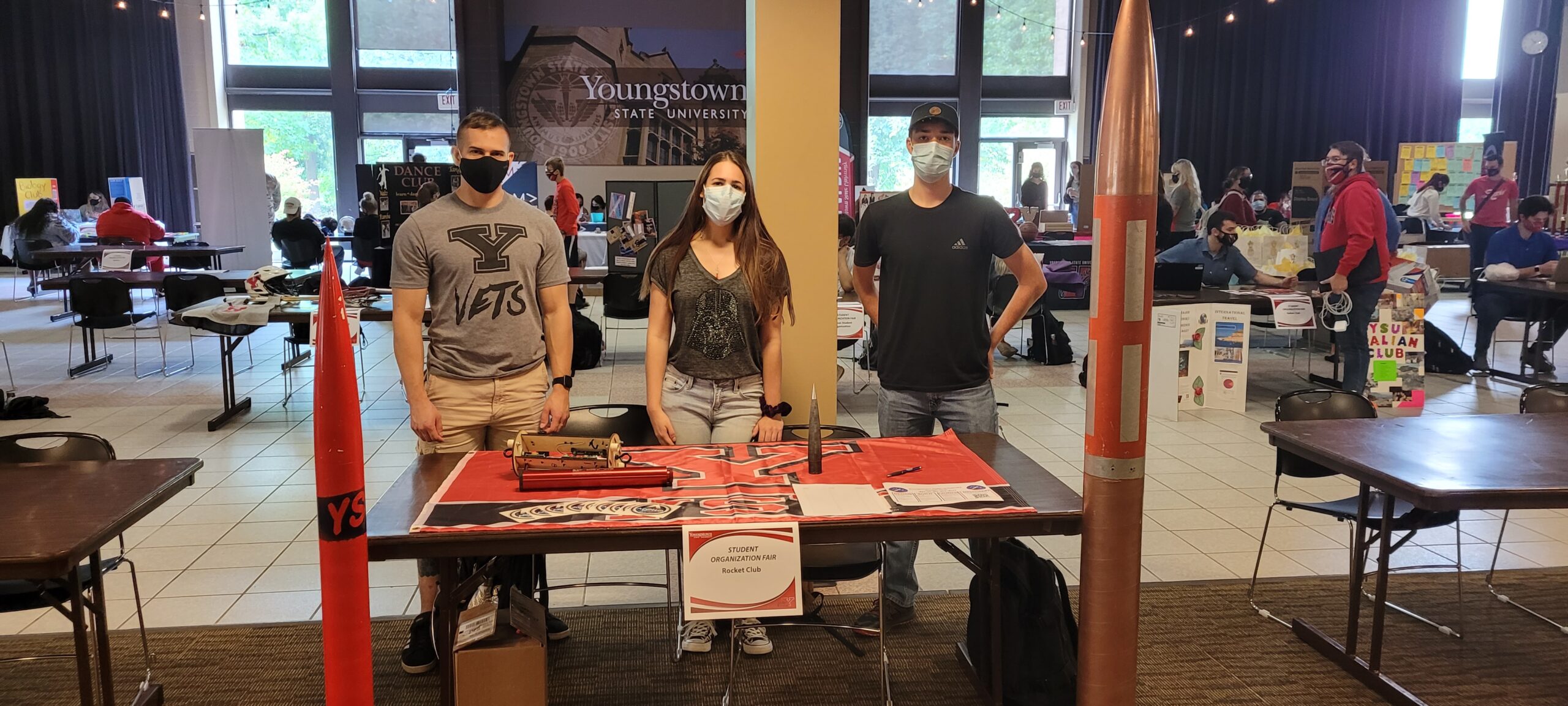By Austin Caroline
Dedication, hard work and a love of rockets: that’s what brought Mitchell Kolacz, Thomas Saunders and Taylor DeProfio together to create the Youngstown State University Rocket Club.
The three senior mechanical engineering students initially had the plan to build a rocket for their senior capstone project, but a year ago they decided to take it one step further and officially created the YSU Rocket Club.
The trio doesn’t plan on stopping with their capstone project. They’re planning on competing in the Spaceport America Cup in New Mexico in June of 2022.
“For the Spaceport America Cup we will need to build a rocket and get it to launch as close to 10,000 feet in the air, and we have to try our best to not go over that height,” Saunders said. “The rocket will also need to include an additional payload of 8.8 pounds. By the time we are done building the rocket, we are expecting it to weigh between 20 to 30 pounds.”
Kolacz, Saunders, and DeProfio said they’re constantly testing their rocket to make sure it meets their standards.
“We just launched our latest model this past Sunday [Sept. 19], and we had one of our best launches. The rocket reached a height of 3,000 feet, and it ended up landing around 500 feet away from us. It’s a good thing that we planned ahead and installed a GPS into the rocket so that we can track it when it lands,” Kolacz said. “The rocket also clocked in at a top speed of 500 miles an hour or approximately .64 Mach.”
Mach 1 is equivalent to the speed of sound, around 761 mph, meaning their rocket achieved just over half the speed of sound on the flight.
“When we want to do a test launch, we have to go to certain cities to make sure that we have air clearance. We typically launch in Grove City in Pennsylvania or we’ll go down to Dayton,” Saunders said. “We’ll go to Grove City if the rocket won’t top 5,000 feet, but if we expect it to go over that, then we’ll have to go to Dayton.”
Before they can get the rockets in the air, the team needs to make sure that they have everything planned, laid out and ready.
“To make sure that we have everything calculated correctly, we use a software called OpenRocket,” DeProfio said. “It allows us to simulate our rocket’s launch, its trajectory, and it also allows us to change factors just in case we believe something might change mid-flight.”
The team also was awarded a grant by the Ohio Space Grant Consortium, a subsidiary of NASA, which allows them to continue building and testing their rockets so that they participate in the Spaceport America Cup.
To learn more about the Spaceport America Cup, visit spaceportamericacup.com
